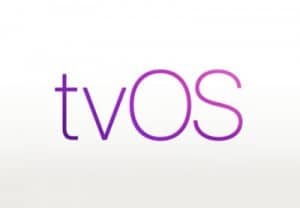In part 2 of my “Making Apple TV Apps” series, we’re going to look at the operating system that powers the new Apple TV, including its iOS-based origins, the differences between iOS and tvOS, and the differences between the Apple TV and iOS-based devices.
If It Ain’t Broke…
 For all intents and purposes, tvOS is iOS. Apple added a few new frameworks to tvOS and removed several existing ones. Some of the missing frameworks make sense, while others will undoubtedly be a source of pain for developers wanting to port their existing iOS apps to the Apple TV. We’ll explore those differences in detail in the next part of our series, “tvOS vs iOS Frameworks.”
For all intents and purposes, tvOS is iOS. Apple added a few new frameworks to tvOS and removed several existing ones. Some of the missing frameworks make sense, while others will undoubtedly be a source of pain for developers wanting to port their existing iOS apps to the Apple TV. We’ll explore those differences in detail in the next part of our series, “tvOS vs iOS Frameworks.”
Storage Limitations
Apple has placed some stringent limitations on both the maximum size of tvOS apps and the amount of persistent storage they have access to. Apple strongly recommends the use of iCloud for data storage and on-demand resources to alleviate the “skinny app” pain. We’ll review both of these topics in depth in later parts of this series.
Touch is Out, Focus is In
Even when taking the addition of the touchpad to the Siri remote into account, users interact with the Apple TV differently than iPhones and iPads. tvOS features a focus engine that is responsible for (a) indicating which on-screen item will receive the user’s commands and (b) determining where focus should be assigned in response to user commands. A later article in this series will be all up in the focus engine’s business.
Create tvOS Apps Your Way
tvOS apps can be created with Xcode, Objective-C and/or Swift, and storyboards and .xib files (or programmatically), just like iOS apps. App delegates, view controllers, UIKit…its all there. However, Apple has also provided a new way to create tvOS apps with the addition of TVJS (as in JavaScript) and TVML (XML) support. The majority of this series will be dedicated to explaining this new approach, including creating, debugging and extending this new type of app.
Full Simulator Support
The Apple Simulator has also been upgraded to support tvOS apps. You can begin work on your shiny new tvOS app even if you don’t yet own a new Apple TV. While you’ll still need to test your app on a real device before submitting it to the App Store, the simulator continues to be a great convenience during development.
More to Come
With 14 articles in total, this series will cover these topics and more in great detail. I hope you’ll continue to visit and follow along with the series or, even better, sign up to receive them in your inbox as soon as they’re available. ‘Til next time…
Leave a Reply